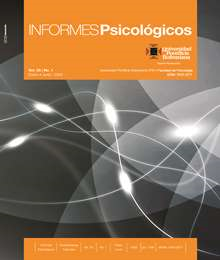Predictores del agotamiento laboral por aburrimiento laboral en una muestra de trabajadores de la industria bancaria de Puerto Rico
Contenido principal del artículo
Resumen
Este estudio analizó los predictores del agotamiento laboral y el efecto de las variables sociodemográficas del aburrimiento laboral en la industria bancaria de Puerto Rico. Buscó examinar si un grupo de empleados experimenta los mismos efectos secundarios por agotamiento laboral y los efectos del aburrimiento laboral de las variables sociodemográficas con base en investigaciones previas de varios países del sector bancario, ya que no hay muchos estudios realizados en Puerto Rico. La muestra estuvo compuesta por 223 empleados de un banco privado en Puerto Rico, de los cuales el 70.9% eran mujeres, el 40.8% tenían 41 años y más, y el 66.8% tenía un puesto de trabajo no exento. Este estudio siguió un diseño transversal cuantitativo de correlación casual y tuvo una muestra probabilística. Se usó un análisis de regresión múltiple jerárquico para medir los predictores independientes y los resultados muestran que solo tres medidas de control fueron estadísticamente significativas. La variable sexo registró un valor beta de nivel más bajo que la dimensión de agotamiento emocional, mientras que el agotamiento emocional fue estadísticamente significativamente más alto que la dimensión de la despersonalización. La regresión logística muestra que ambos sexos experimentaron aburrimiento y agotamiento
Referencias
Bagozzi, R.P., Gopinath, M., & Nyer, P.U. (1999). The role of emotions in marketing. Journal of the Academy of Marketing Science, 27, 184-206.
Bruursemaa, K., Kessler, S. R., & Spector, P. E. (2011). Bored employees misbehaving: The relationship between boredom and counterproductive work behaviour. Work & Stress, 25(2), 93-107. doi:10.1080/02678373.2011.596670
Cleary, M., Sayers, J., Lopez, V., & Hungerford, C. (2016). Boredom in the workplace: Reasons, impact, and solutions. Issues in Mental Health Nursing, 37(2), 83-89.
Cummings, M. L., Gao, F., & Thornburg, K. M. (2016). Boredom in the workplace: A new look at an old problem. Human Factors, 58(2), 279-300.
Erol, S., Gur, K., Ergun, S., & Yalcın, I. (2014). Burnout level of a bank's call centre employee and affecting factors. Journal of Marmara University Institute of Health Sciences, 4(4), 216-225. doi:10.5455/musbed.20140913123629
Financial Planning Today. (2017, February). 67% of financial services staff bored at work. Retrieved from https://www.financialplanningtoday.co.uk/news/item/7108-67-of- financial-services-staff-bored-at-work
Haishu, Q., Yue, X., & Ying, L. (2016). Perceived employability moderates’ burnout and depression among bank employees. Social Behavior & Personality: An International Journal, 44(7), 1123-1132. doi:10.2224/sbp.2016.44.7.1123
Harju, L.k., & Hakamen, J.J. (2016). An employee who was not there: A study of job boredom in white-collar work. Personnel Review, 45(2), 374-39. doi:10.1108/PR-05-2015-0125
Khan, S. A. K., & Siddiqui, S. (2017). Organizational commitment as predictors of job satisfaction among executive of bank employees. Indian Journal of Health & Wellbeing, 8(8), 932-935.
Leiter, M. P., & Maslach, C. (2016). Latent burnout profiles: A new approach to understanding the burnout experience. Burnout Research, 3(4), 89-100.
Mael, F., & Jex, S. (2015). Workplace boredom: An integrative model of traditional and contemporary approaches. Group & Organization Management, 40(2), 131-159.
Mann, S., & Cadman, R. (2014). Does being bored make us more creative? Creativity Research Journal, 26(2),165-173. doi:10.1080/10400419.2014.901073
Martínez-Lugo, M., & Rodríguez-Montalbán, R. (2016). Cuando el trabajo aburre: Análisis de las propiedades psicométricas de la Escala de Aburrimiento Laboral (EAL). Revista Interamericana de Psicología, 35, 7-20. doi:10.21772/ripo.v35n1a01
Maslach, C., Schaufeli, W. B., & Leiter, M. P. (2001). Job burnout. Annual Review of Psychology, 52(1), 397-422.
Qiao, H., Xia, Y., & Li, Y. (2016). Perceived employability moderates burnout and depression among bank employees. Social Behavior and Personality: an international journal, 44(7), 1123-1132.
Reijseger, G., Schaufeli, W. B., Peeters, M. W., Taris, T. W., van Beek, I., & Ouweneel, E. (2013). Watching the paint dry at work: psychometric examination of the Dutch Boredom Scale. Anxiety, Stress & Coping, 26(5), 508-525. doi:10.1080/10615806.2012.720676
Salami, S.O., & Ajitoni, S.O. (2016). Job characteristics and burnout: The moderating roles of emotional intelligence, motivation and pay among bank employees. International Journal of Psychology, 51(5), 375-382. doi:10.1002/ijop.12180
Schaufeli, W. B., & Salanova, M. (2014). Burnout, boredom and engagement in the workplace. In M. C. W. Peeters, J. De Jonge, & T. W. Taris (Eds.), An introduction to contemporary work psychology. (pp. 293-320). USA: John Wiley & Sons, Ltd.
Van Hooff, M. L., & Van Hooft, E. A. (2016). Work-related boredom and depressed mood from a daily perspective: the moderating roles of work centrality and need satisfaction. Work & Stress, 30(3), 209-227.
Van Wyk, S. M., de Beer, L. T., Pienaar, J., & Schaufeli, W. B. (2016). The psychometric properties of a workplace boredom scale (DUBS) within the South African context. SAJIP: South African Journal of Industrial Psychology, 42(1), 1-10. doi:10.4102/sajip.v42i1.1326
Velasco, F. (2017). Understanding workplace boredom among service employees: Qualitative insights and employee outcomes. Journal of Managerial Issues, 29(3), 278-293.
Vos, J.A., Brouwers, A., Schoot, T., Pat-El, R., Verboon, P., & Näring, G. (2016). Early career burnout among Dutch nurses: A process captured in a Rasch model. Burnout Research, 3(3), 55-62.
Whiteoak, J. W., & Mohamed, S. (2016). Employee engagement, boredom and frontline construction workers feeling safe in their workplace. Accident Analysis and Prevention, 93, 291-298.
Zafar, A., Zahra, N., & Zia, Y. A. (2014). Antecedents of job burnout among bank employees. Putaj Humanities & Social Sciences, 21(2), 13-24.


